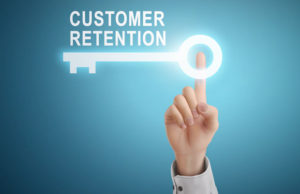Throughout the early fall, analysts have been treated to a continuous stream of announcements from the CRM community, especially Salesforce and Oracle. New product availability belies the facts on the ground of an economy hobbled by a pandemic. It’s a gusher of good technology intended for a market eager to snap it up. That said, I am not sure about the market and we might be looking at a technology glut.
Glut is a strange word in software since there’s no inventory to back up as you’d see in a more conventional glut. Over the summer gas process were very low because producers kept pumping in the face of declining demand which created a glut. Software is different, especially in the cloud era. When demand happens it’s a simple transaction and users can begin almost immediately to use the technology. But that doesn’t mean you can’t have a glut.
My research this year establishes a disconnect between the wonderful features and functions of the new technologies and the realities of how companies use them — or not. In surveys of over one thousand end users from as many companies of all sizes, including multi-billion-dollar ones, the evidence shows that this technology is not reaching users.
They complain of stand-alone systems that aren’t integrated and of running as many as eight apps at once trying to do their jobs. People understandably run out of time in a day too. They work long hours, do business from their phones at the gym, their children’s school activities, and even in the bathroom.
The old hypothesis explaining this lack of adoption was that software was too costly and took too much time to install or maintain. Back in the day that was true, but no more. Cloud computing is easy to install and use, and cheap and while we’re at it, and vendors refresh apps with new features and functions multiple times per year. That’s a far cry from the annual upgrade season we saw twenty years ago.
So What’s Going On?
You might be tempted to blame economic conditions for slack demand if it exists, but that’s not it. My surveys straddle COVID’s before and after. In truth, for the two plus decades that I’ve been following CRM, there’s always been adoption reluctance emanating from the front office. Rather than accepting CRM’s different approach to doing business, many people still resist it, preferring to go with their gut or stick with manual systems, because updating CRM is tedious.
Many businesses have bought into CRM, of course. It isn’t an 80-billion-dollar industry for nothing. But for many years we’ve seen that only about a quarter of organizations use CRM appropriately. Others use it for simple record keeping, or barely use it at all. A great tell for this is that in one of my studies, CRM ranked only fourth in importance as a tool people use daily. Email ranked higher. Email.
This is important to everyone because the first decades of CRM were largely about gathering and consolidating data that people could use in their customer-facing jobs. But today, a lot of those jobs have been automated away. When was the last time you went to a website or made a call for support and interacted with a person? You could, but first you needed to get through a very good self-service system that likely solved your problem sans human.
We’ve turned a corner in CRM. Two decades ago, you could put off adoption by saying the stuff doesn’t work or it doesn’t fit my oh-so-unique business. Not so much anymore.
This fall companies like Salesforce are introducing advanced vertical industry specific solutions while Oracle continues to refine its platform, analytics and infrastructure to do much the same.
All of this is done in an effort to boost the prospects of what’s been called the digital disruption, but is increasingly becoming just business as usual, which brings us to the glut. Currently available CRM systems might now outstrip the abilities of customers to adopt them.
Training Is Essential to Progress
It’s tempting to say that customers just need to get down to work, but that ignores a pressing reality. If my data is right, the people who need CRM are already under water. They’re working too hard and spending more than the eight hours a day that they’re paid for. So there’s scarcely any time to take on something new. That’s partly why my studies indicate relative complacency with the cobbled together systems they’re using — at least they can do their jobs, make their quotas and go home.
Learning something new at work, no matter how good it is, can be a daunting task and one that needs to be supported by organizations that have used CRM to reduce their overhead. Learning might mean bringing on a few more people to spread the work around and make feasible learning something new.
This should surprise exactly no one, though business has often not been good at this kind of transition. In the 1970s and ’80s car makers went through a similar turning point. It was a time when they were converting from mostly rear-wheel drive cars to front wheel-drive. At the same time, they were obsessed with quality control, reimagining the manufacturing process, and introducing robots. They were also fighting enhanced foreign competition for the first time.
There’s a reason for new technology adoption reluctance. During that era U.S. auto makers lost about half of their market share.
That’s about where we are in CRM today. Some companies are adopting digital disruption strategies early, while others haven’t kept up. The big difference today however is that the big vendors are taking steps to protect their customers from the downside risks. They’re spinning up online training functions and bringing in expert partners to help.
Ultimately, it’ll take additional resources from both vendors and customers to bring us into the digital CRM era. So, as I look at all of the new technology available this fall, I smile at vendor creativity and I hope that ingenuity extends to new approaches to implementation, training, and even financing.



























































Social Media
See all Social Media